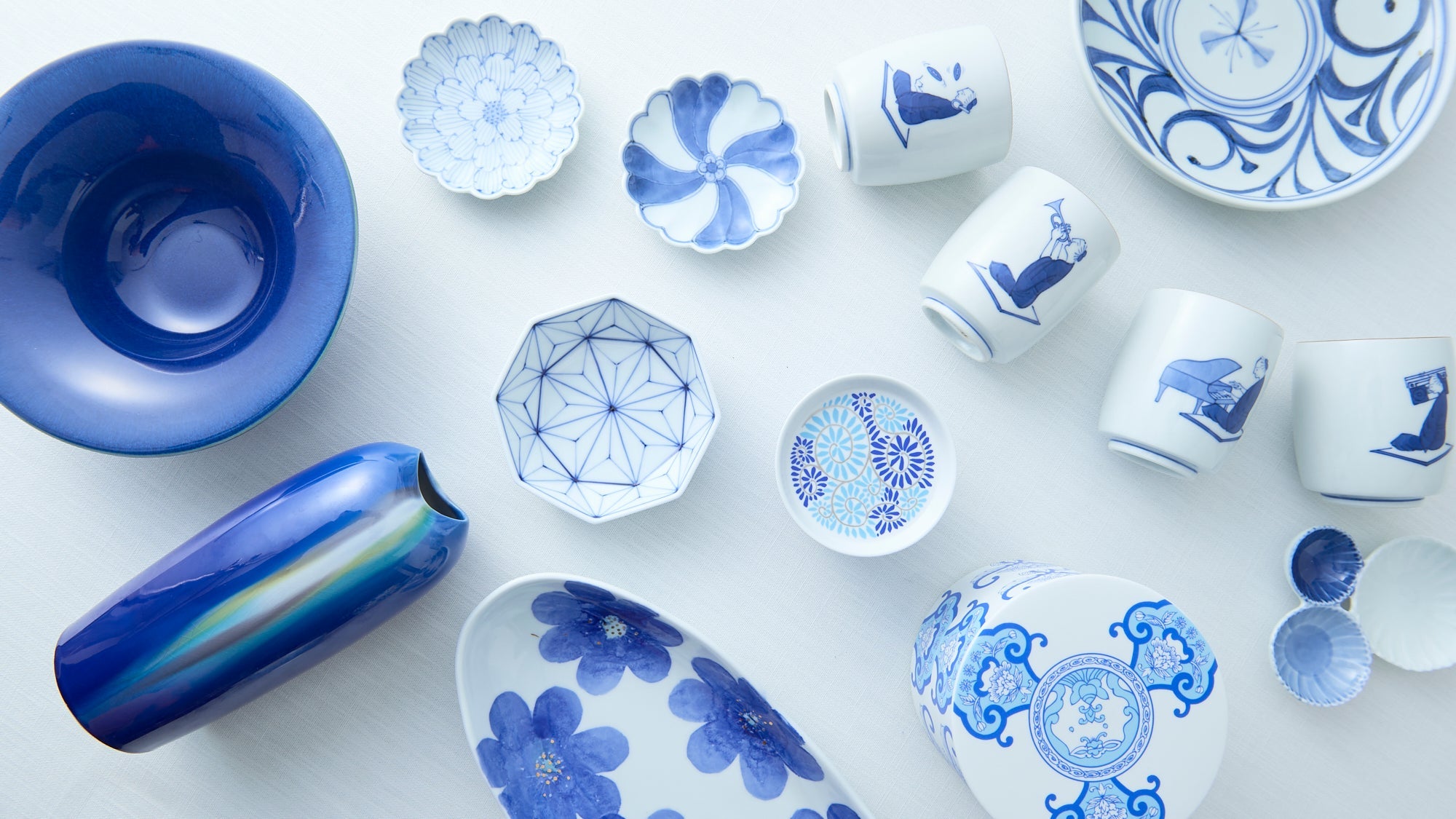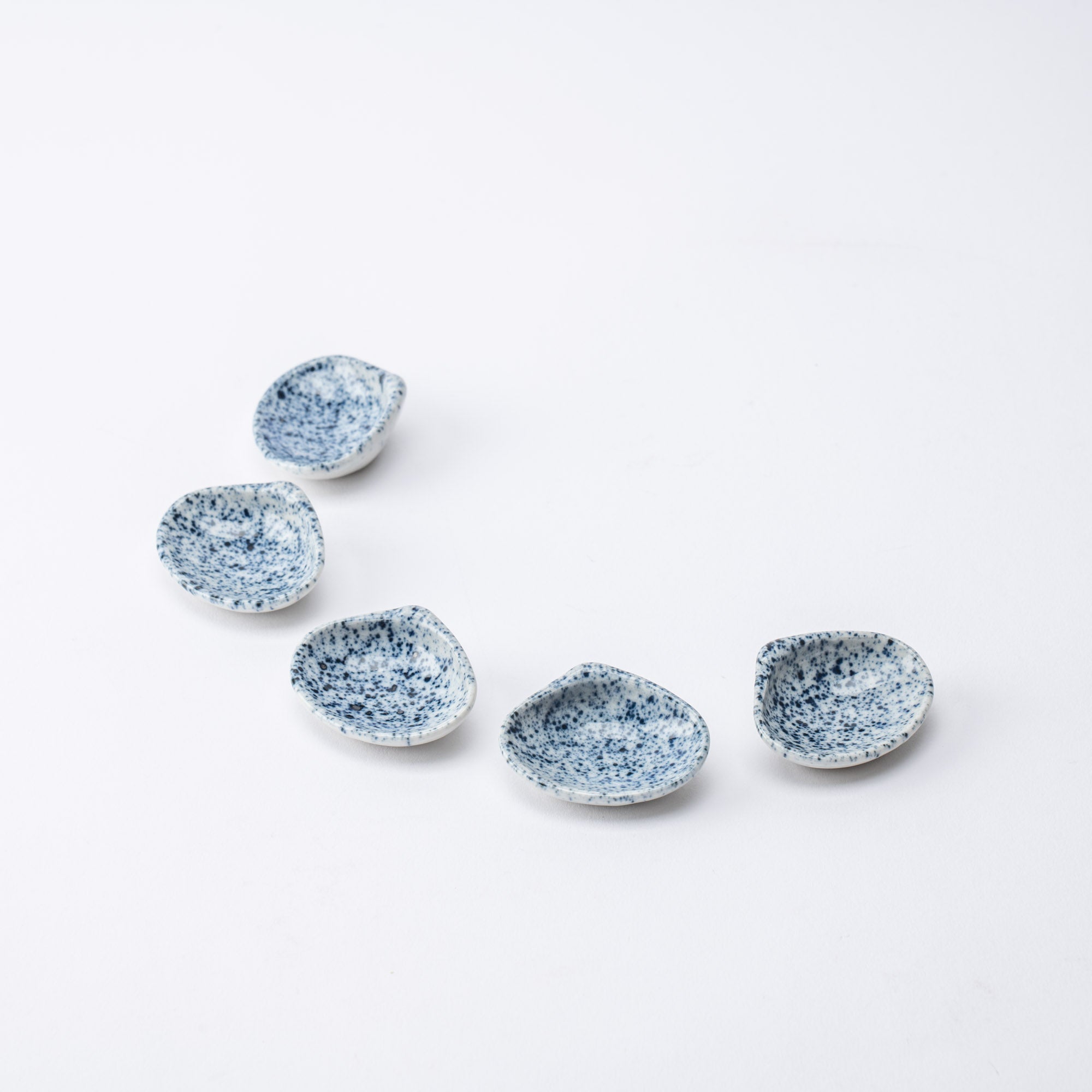
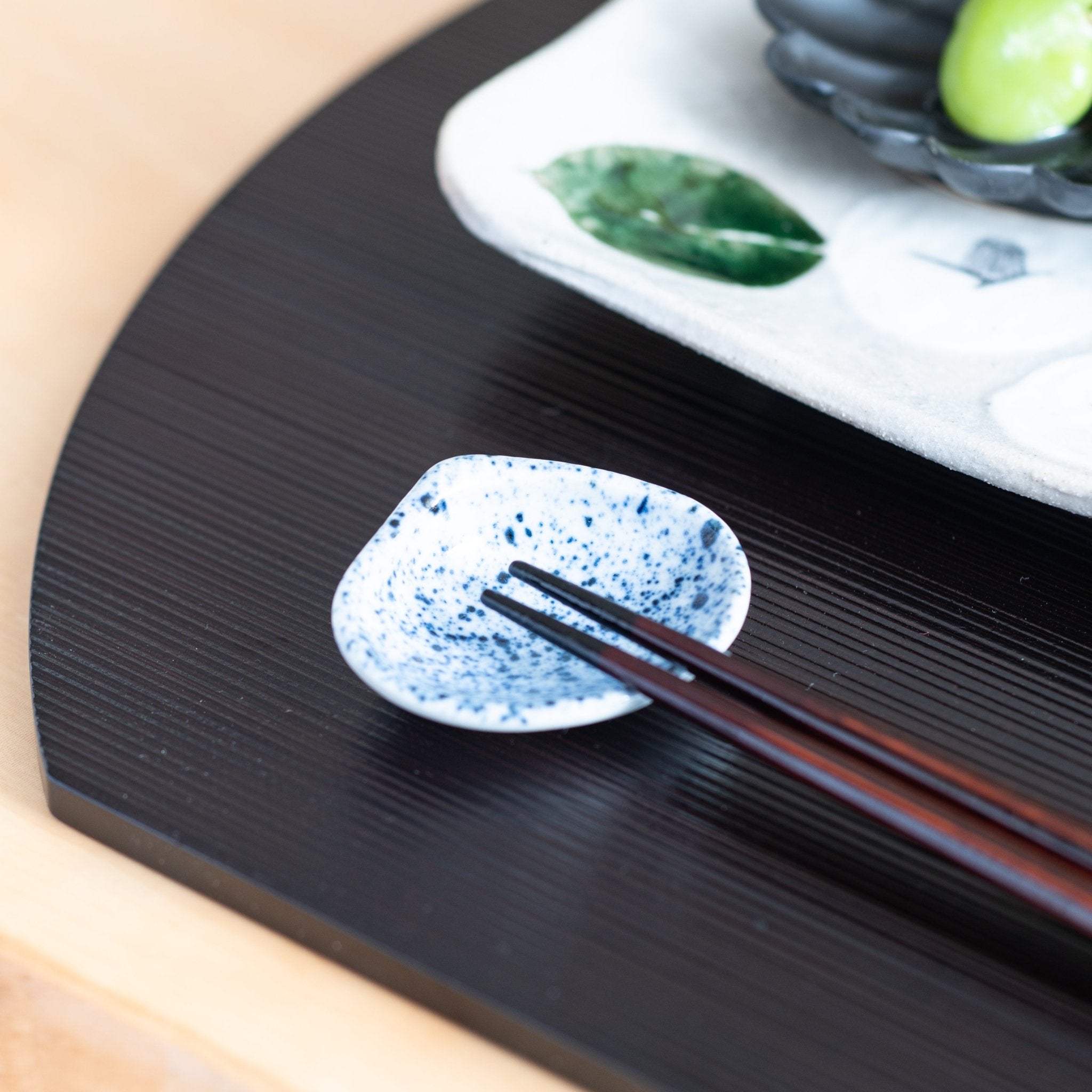
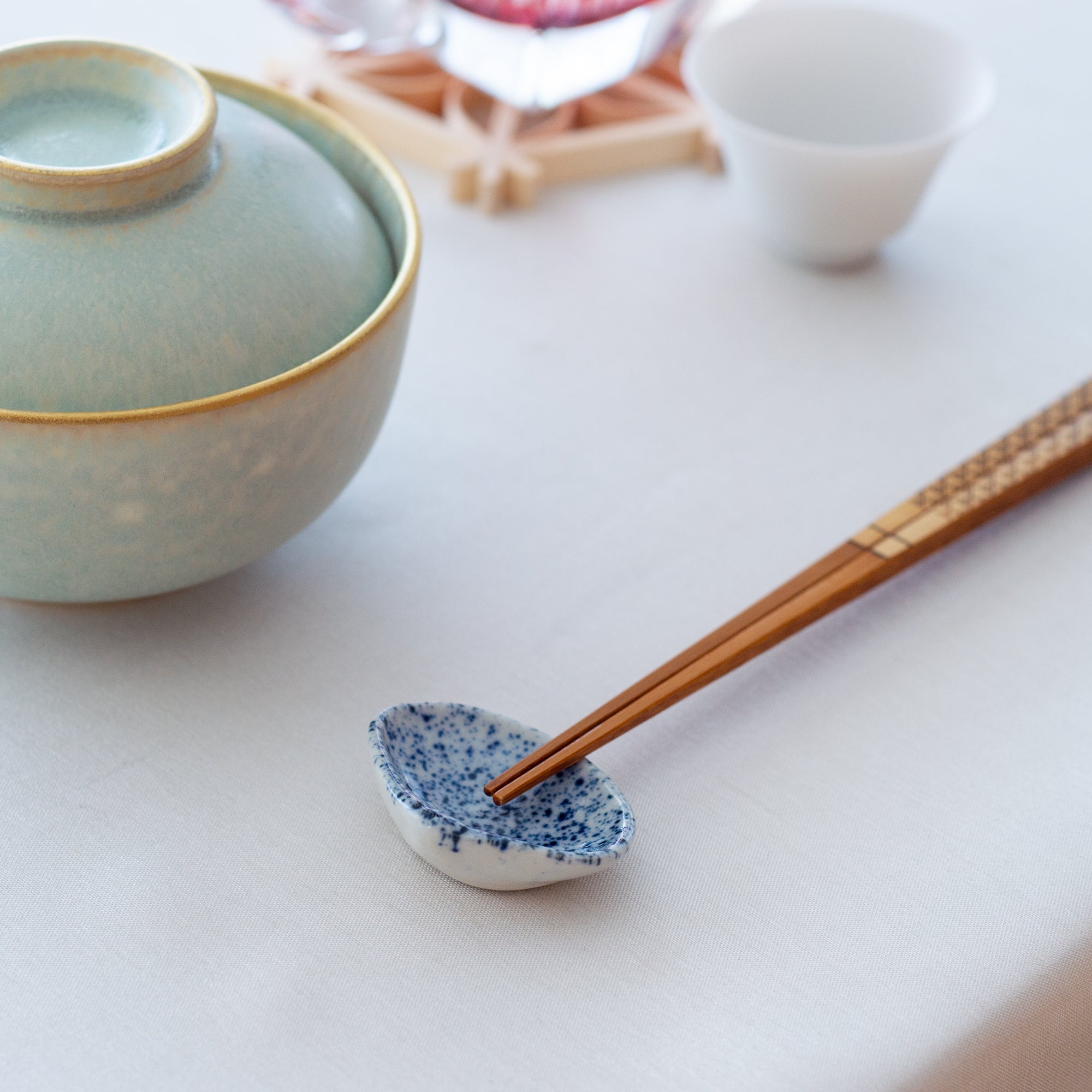
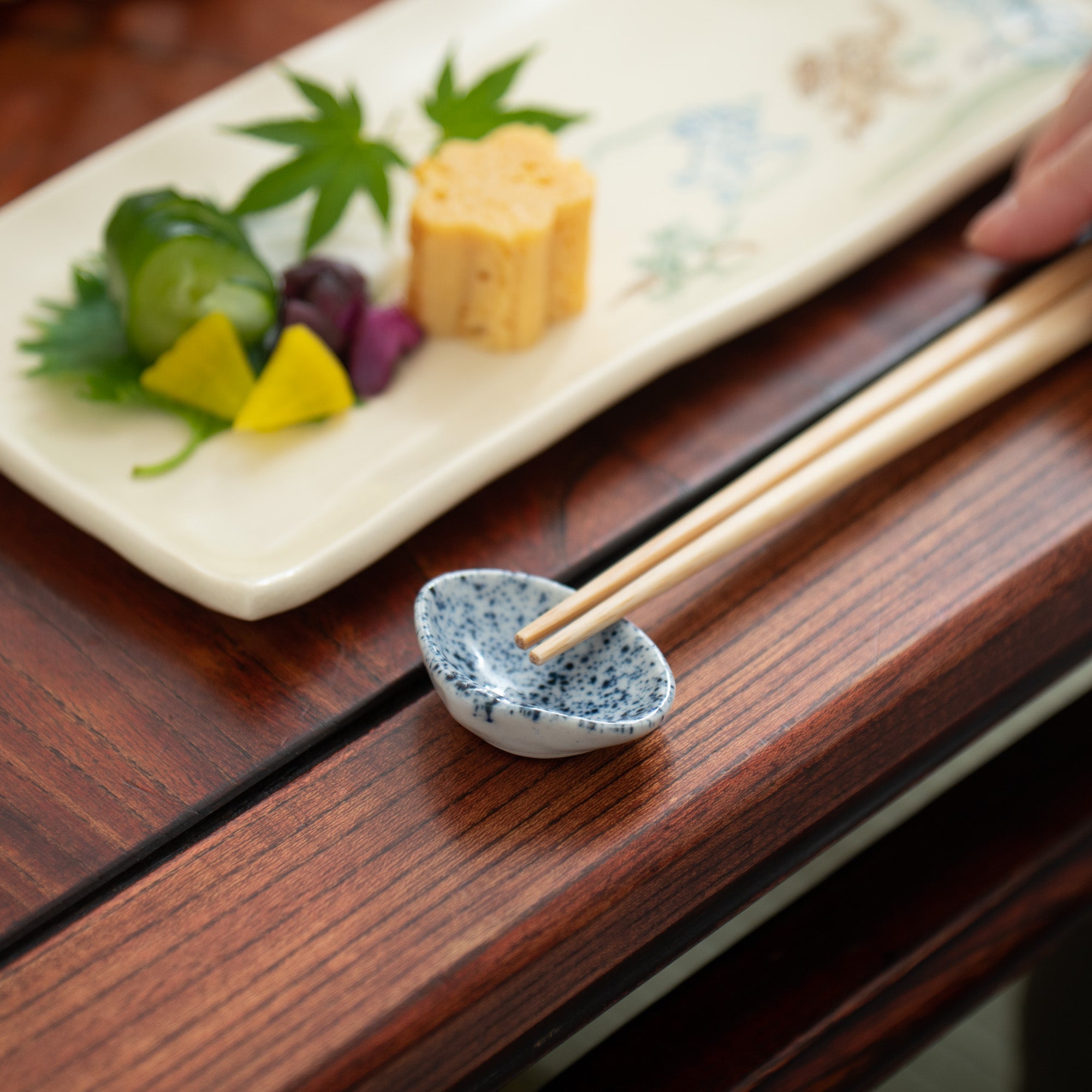
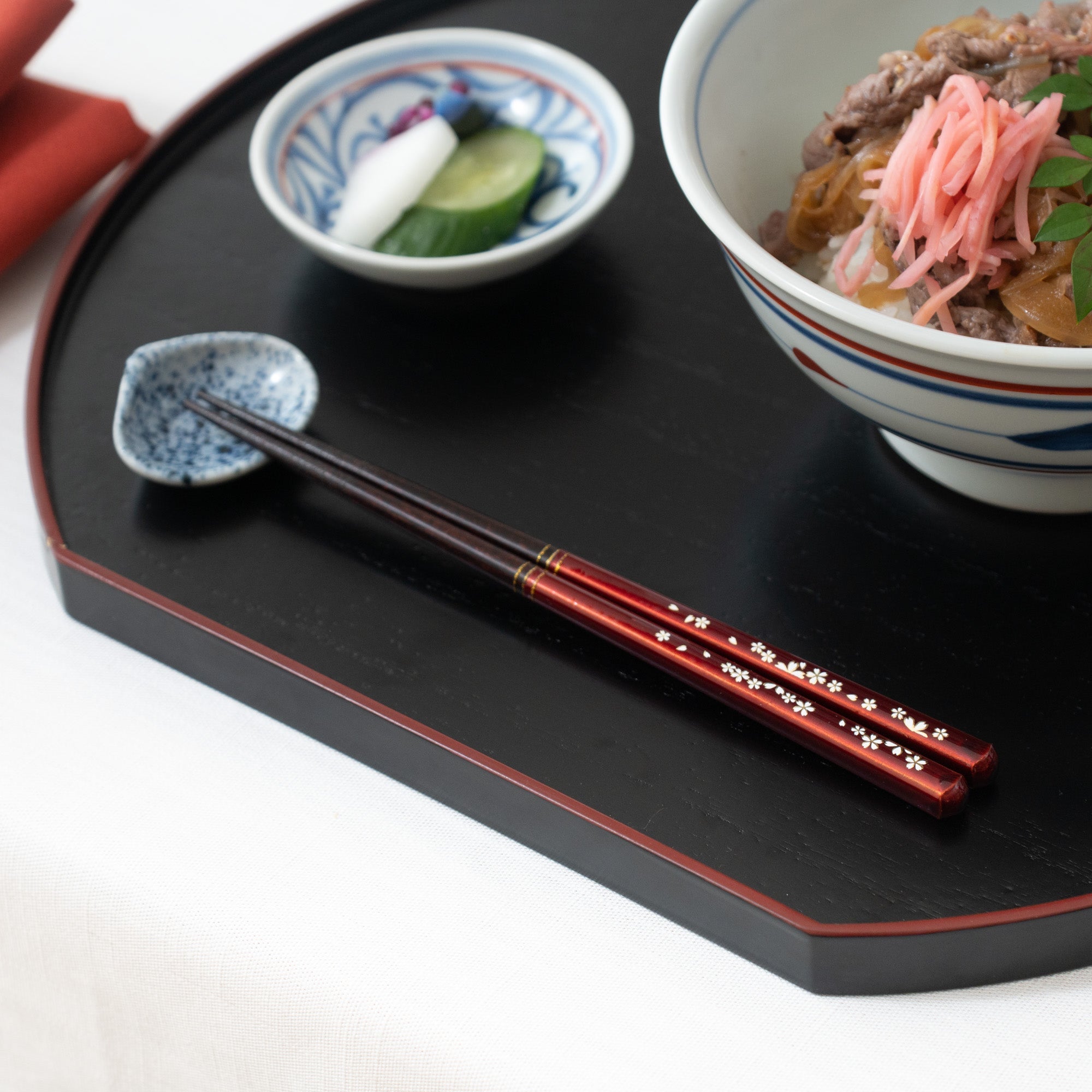
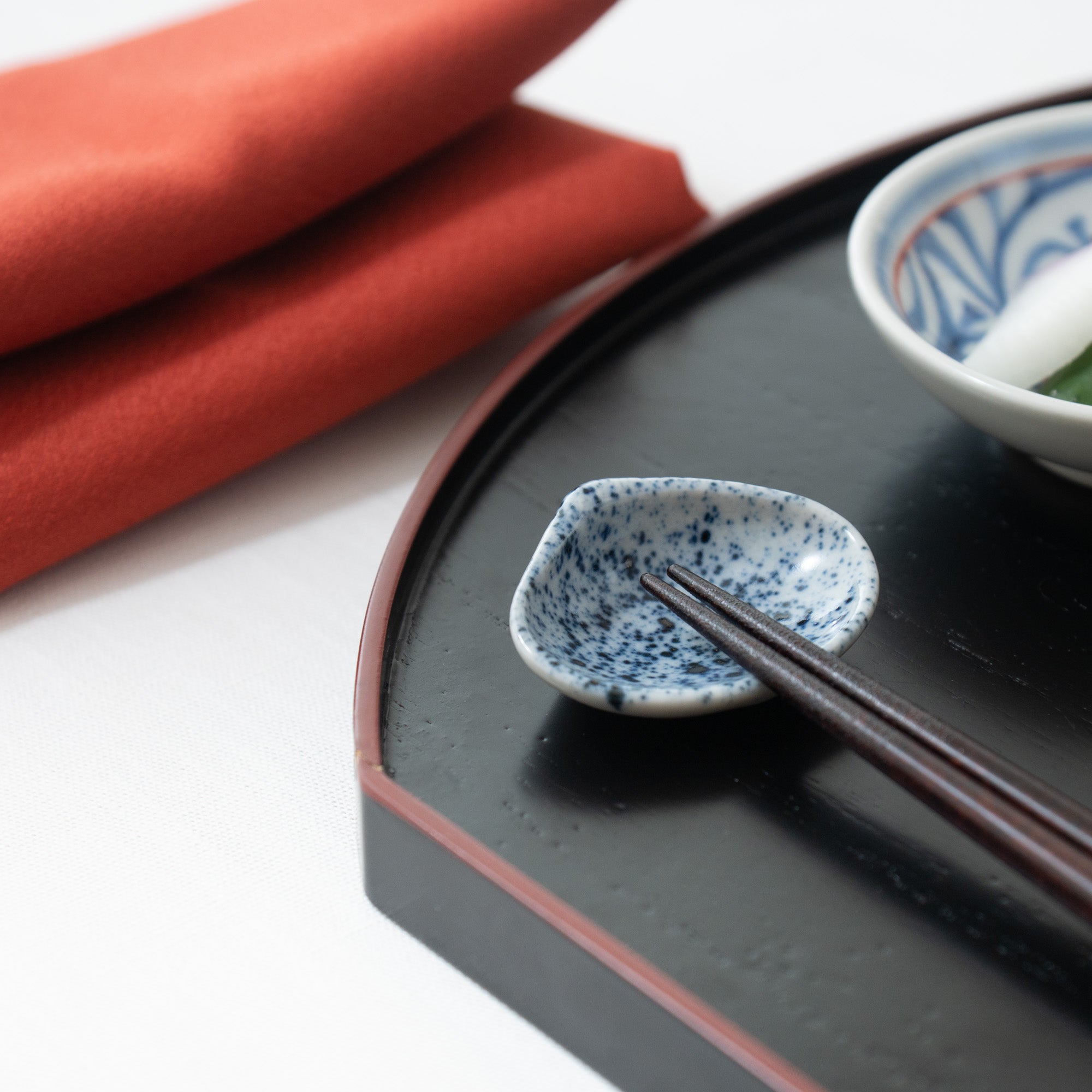
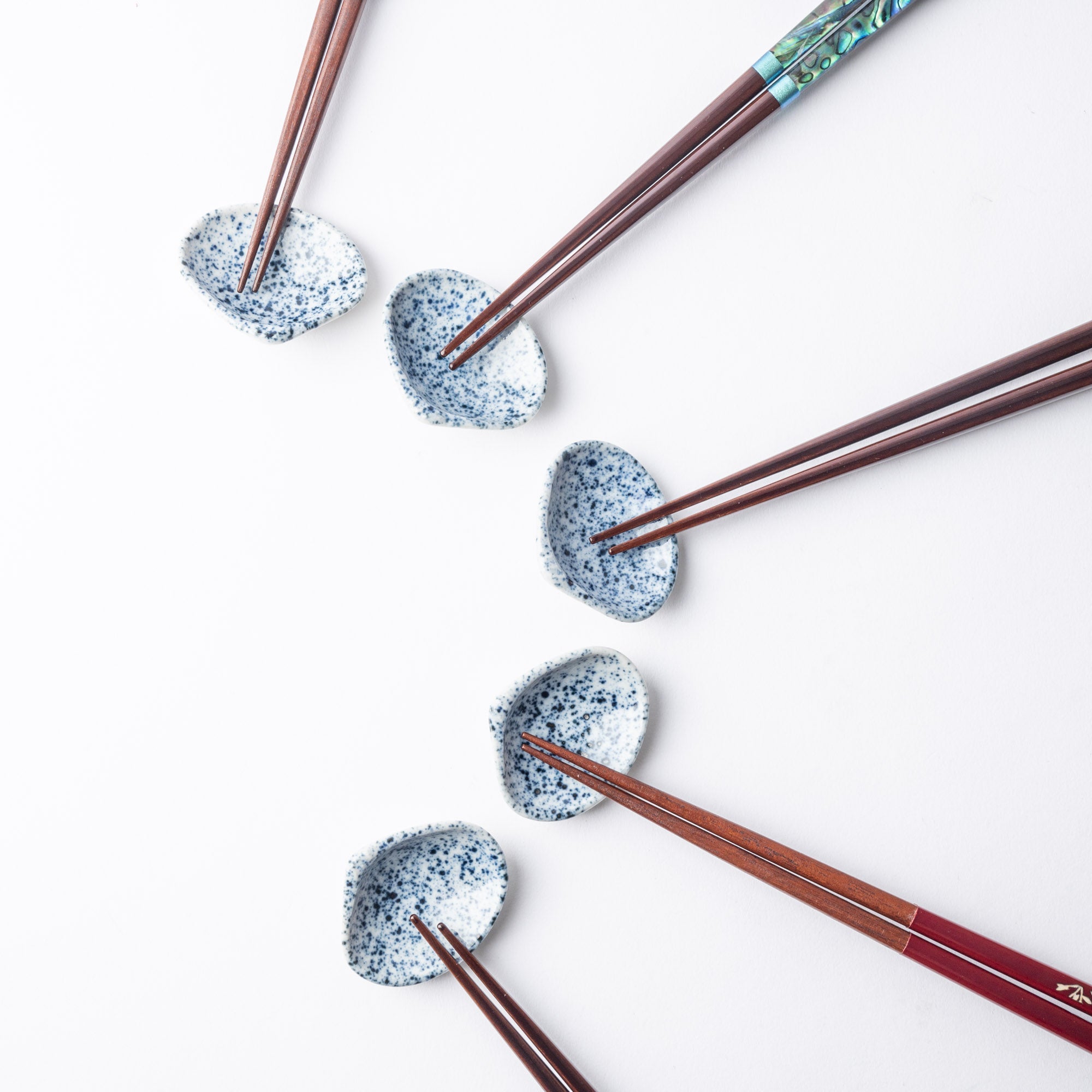
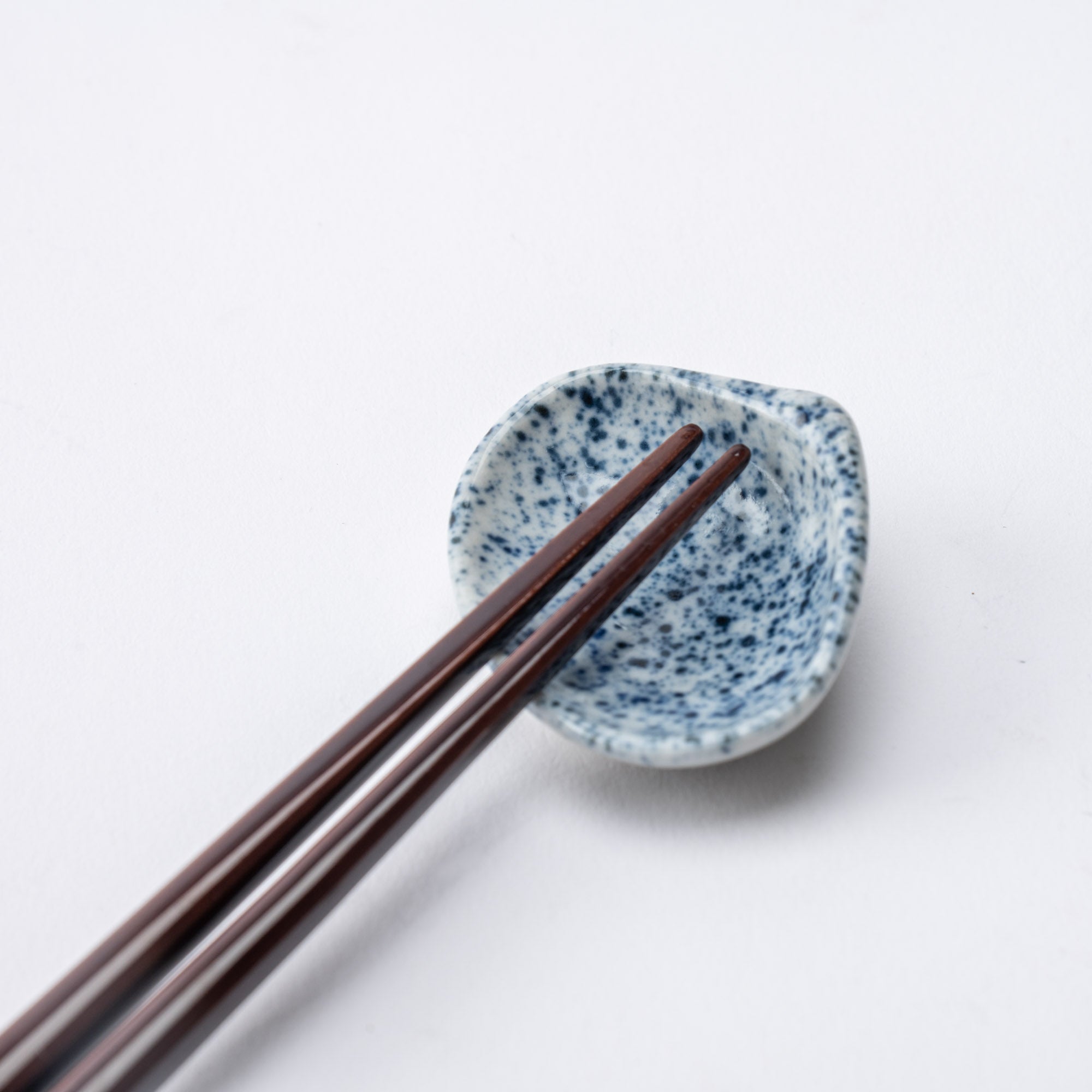
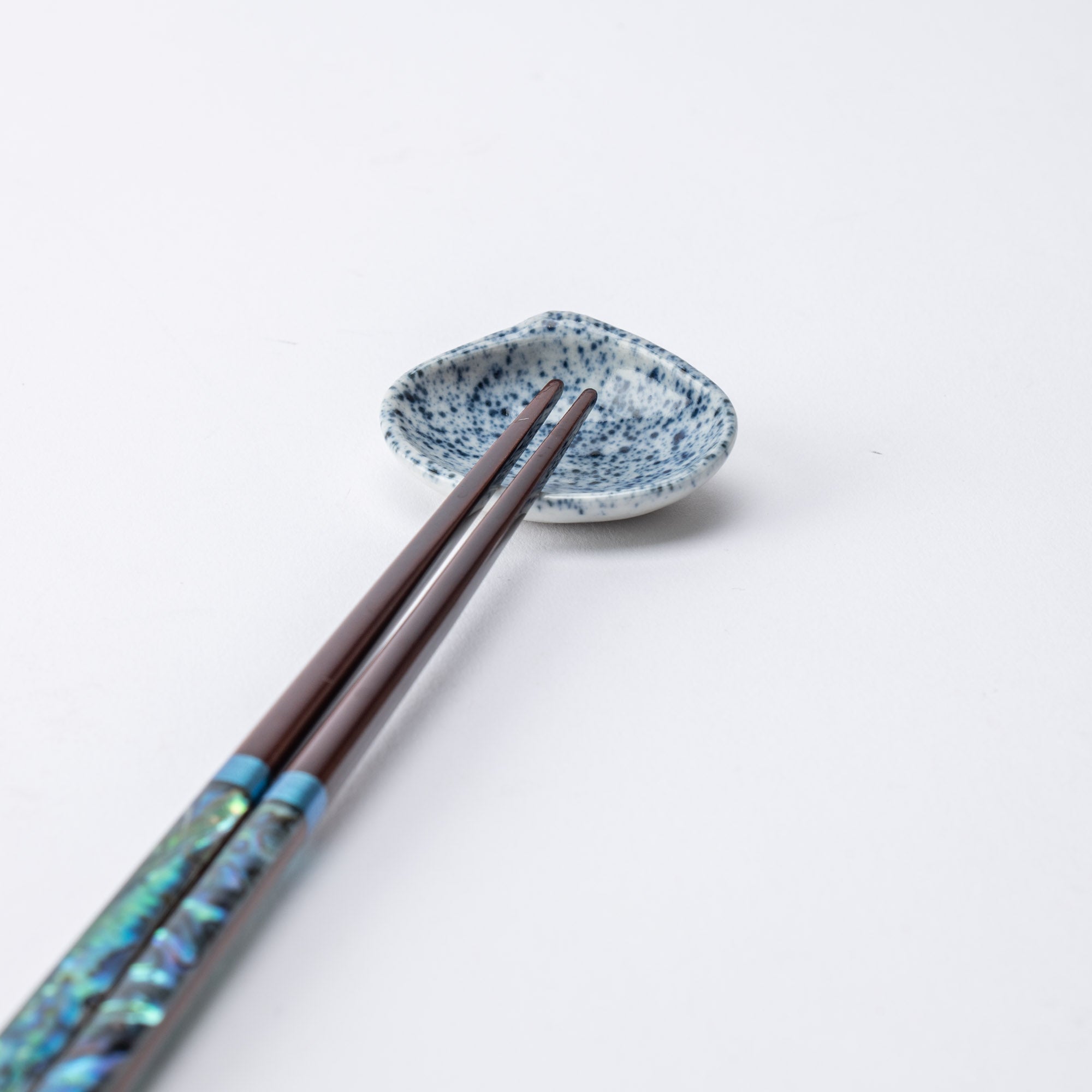
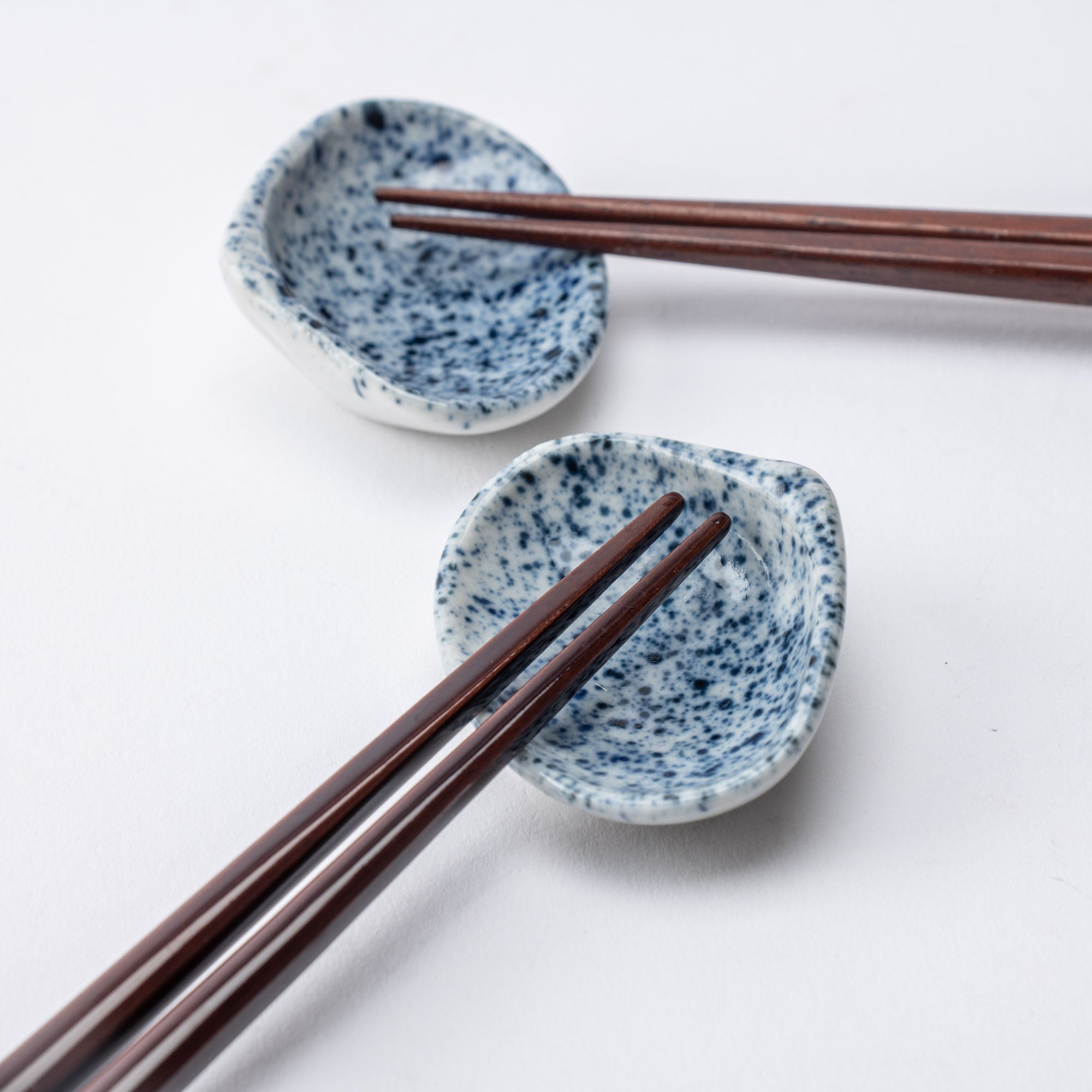
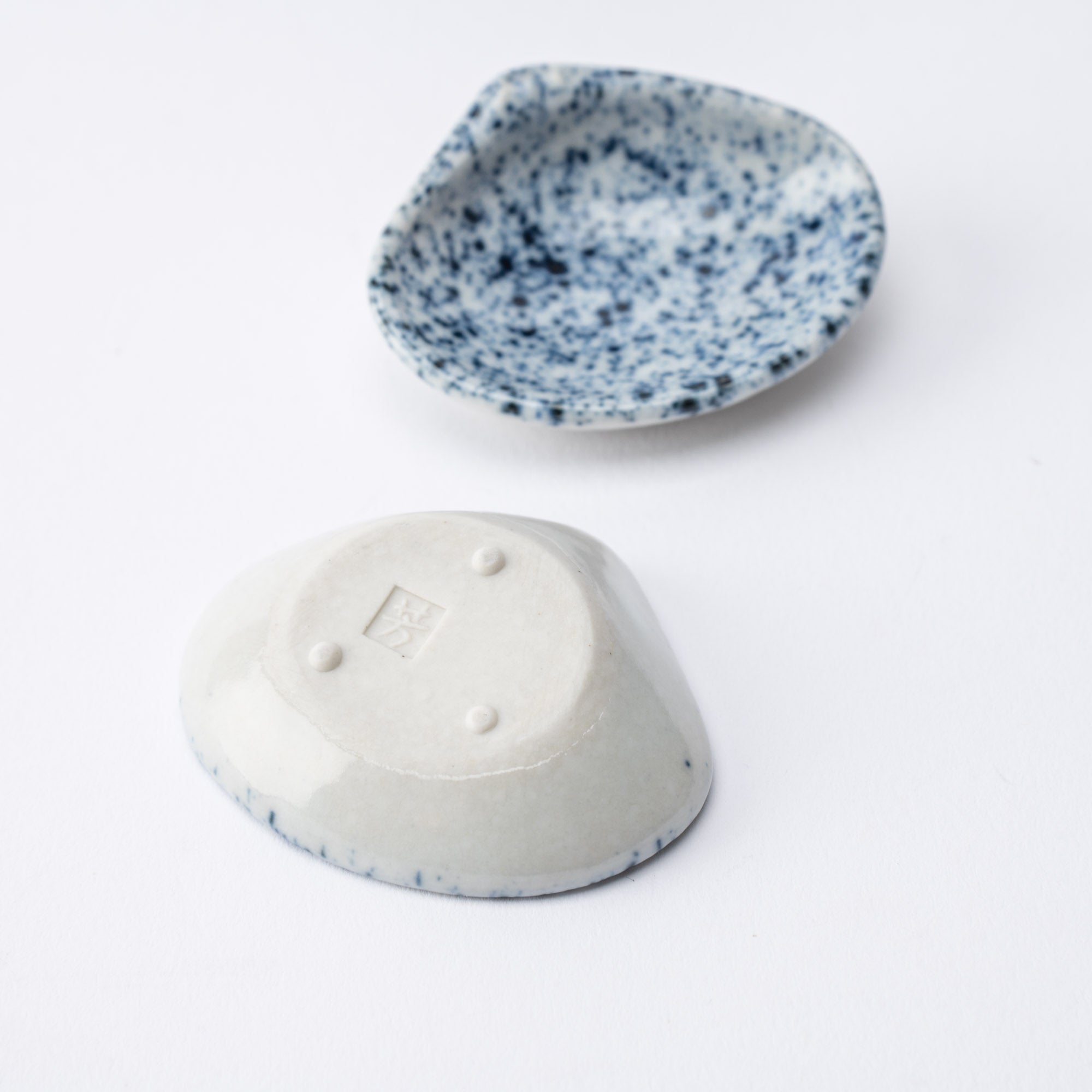
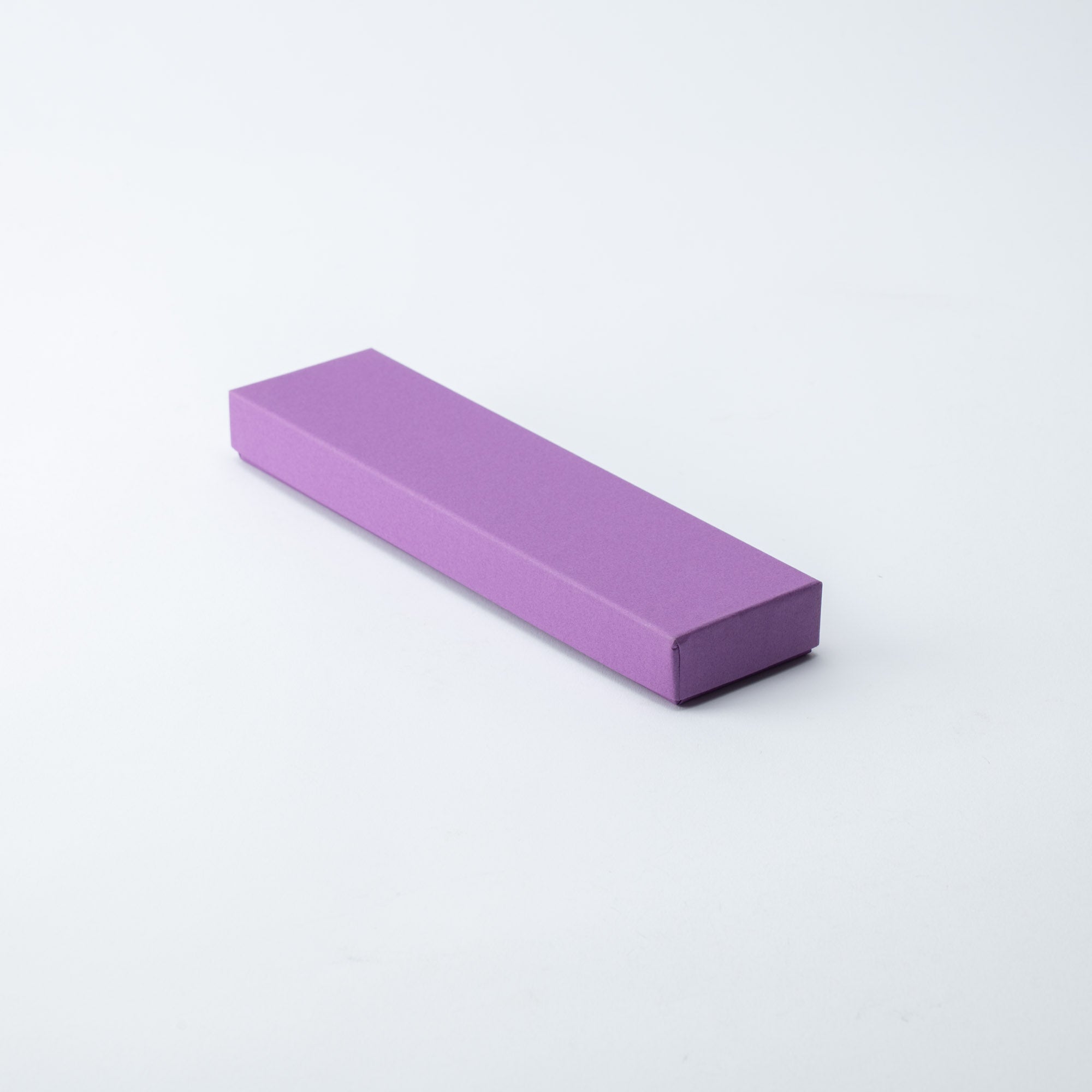
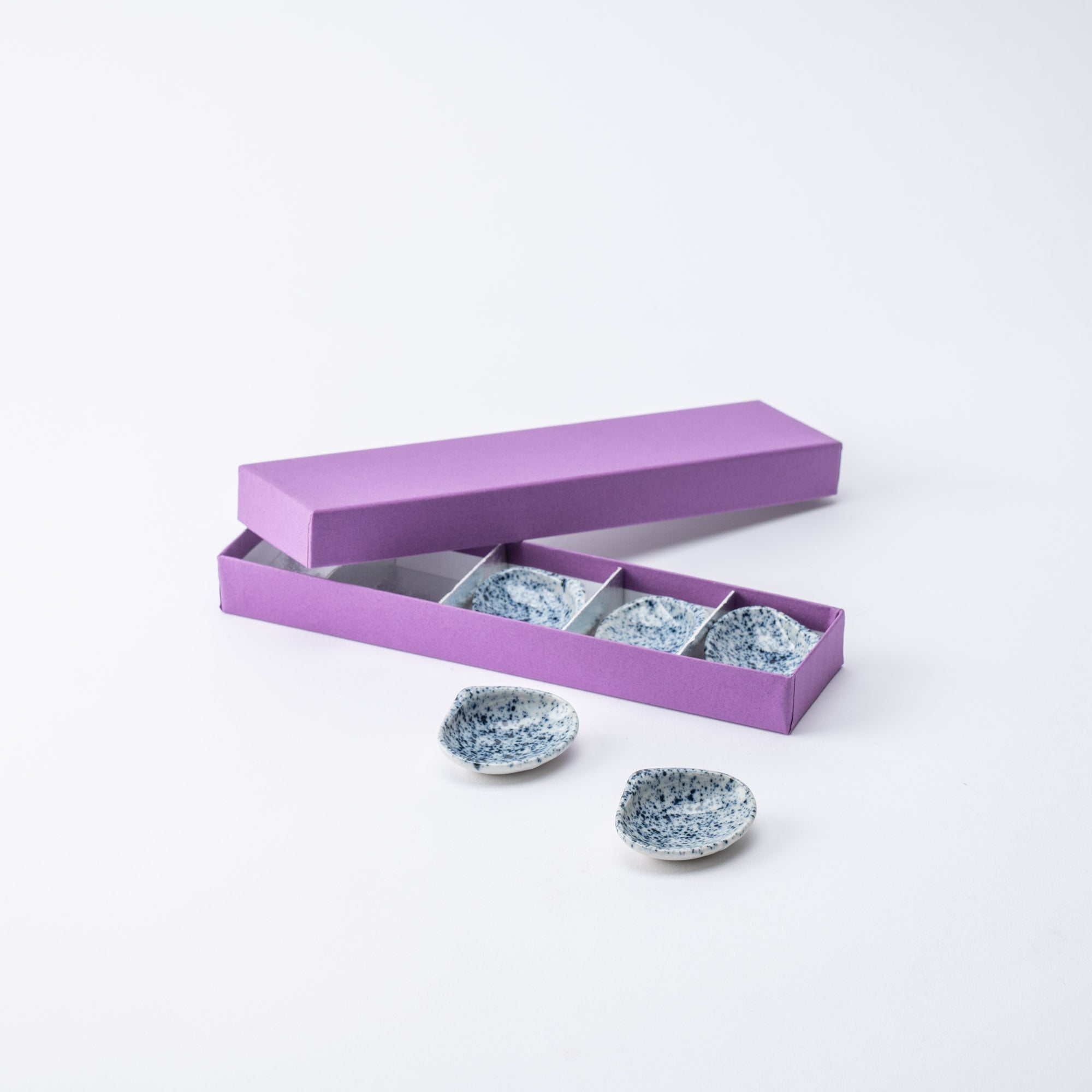
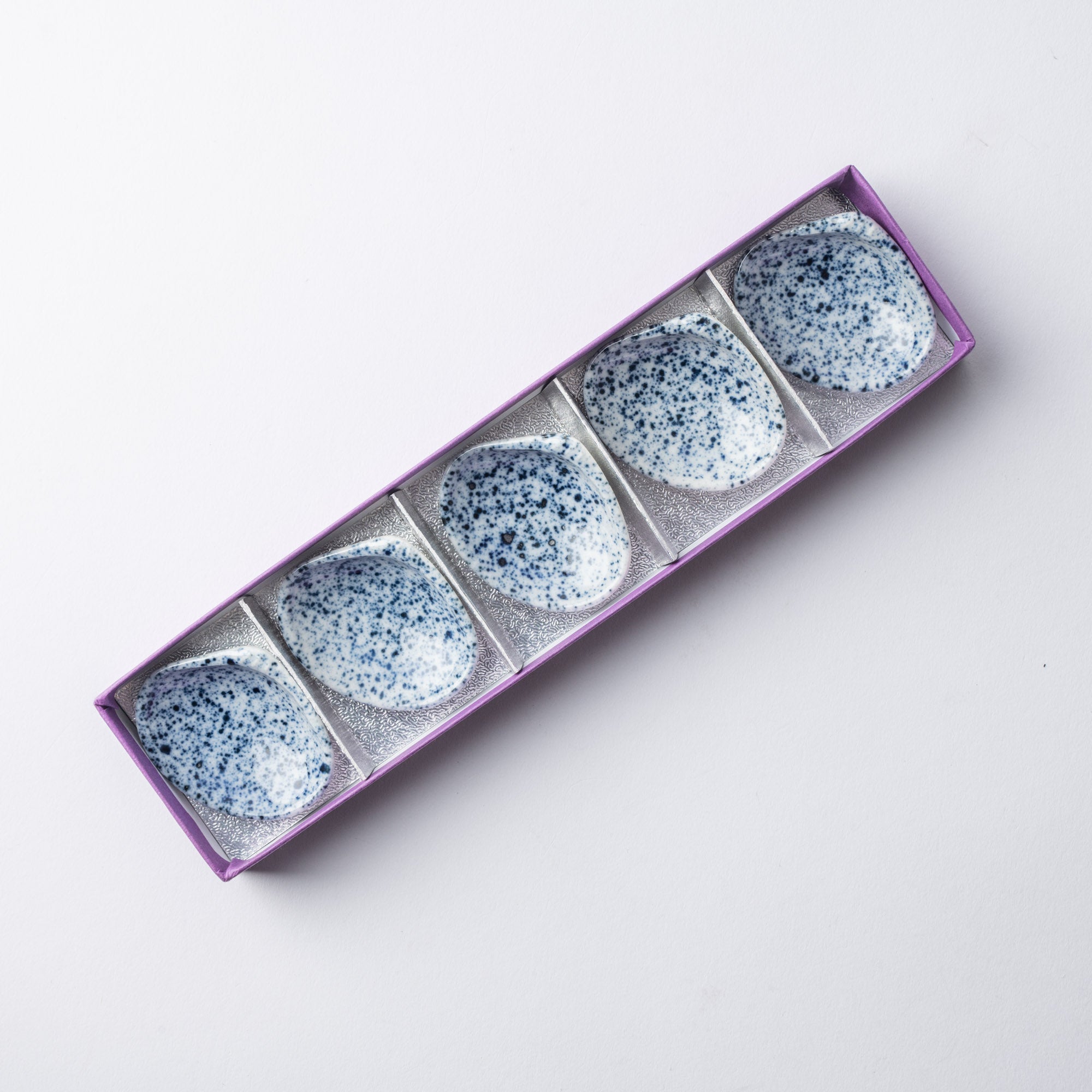
Tintenbesprühte Muschel-Essstäbchenablage Satz
Estimated Shipping Widget will be displayed here!
Mit muschelförmigen Essstäbchenhaltern aus Keramik verleihen Sie Ihrem Tisch eine erfrischende Atmosphäre. Diese Accessoires haben eine authentische Textur, die sie wie aus der Natur stammend erscheinen lässt.
Dieser besondere Mustertyp wird durch die Methode erstellt, die als fukizumi (Sprühen von Tinte). Dabei wird wasserlösliche Farbe oder blaues Pigment verwendet, gosu, Dieses wird verteilt, indem man mit einer harten Bürste über ein feinmaschiges Sieb fährt und es auf die Oberfläche des Porzellangrundkörpers aufträgt. Eine solche Technik kann man häufig bei untergrasten Porzellanstücken beobachten.
Das klassische Design bringt Farbe in die Essszene und macht dieses Set zu einer guten Wahl als erstes Set an Essstäbchenablagen.
Mit ihrer glatten Oberfläche sind Essstäbchenablagen aus Keramik das ideale Material für den täglichen Gebrauch. Sie sind nicht nur leicht sauber zu halten, sondern passen auch zu einer Vielzahl von Geschirrteilen.
EINZELHEITEN
| Quantity | 5 pcs |
| Size | L 5.3 cm (2 in) x W 4.3 cm (1.7 in) x H 2 cm (0.8 in) |
| Material | Stoneware |
| Package Type | Paper box |
| Microwave | No |
| Dishwasher | No |
Hersteller / Marke
Der Hozan-Ofen in Kyoto konzentriert sich hauptsächlich auf Unterglasur-Emaillierungstechniken, insbesondere gosu, und ist spezialisiert auf die Herstellung von netzbemaltem Geschirr und zart bemalten Essstäbchenablagen, die mit saisonalen Motiven verziert sind.
Die Geschichte von Hozan Kiln reicht bis ins Jahr 1951 zurück, als das Unternehmen als Kato Yukichi Seisakusho (Kato Yukichi Fabrik) gegründet wurde. Später wurde der Name in Hozan Kiln geändert. Der derzeitige Eigentümer, Kato Yoshitsugu, vertritt die dritte Generation.
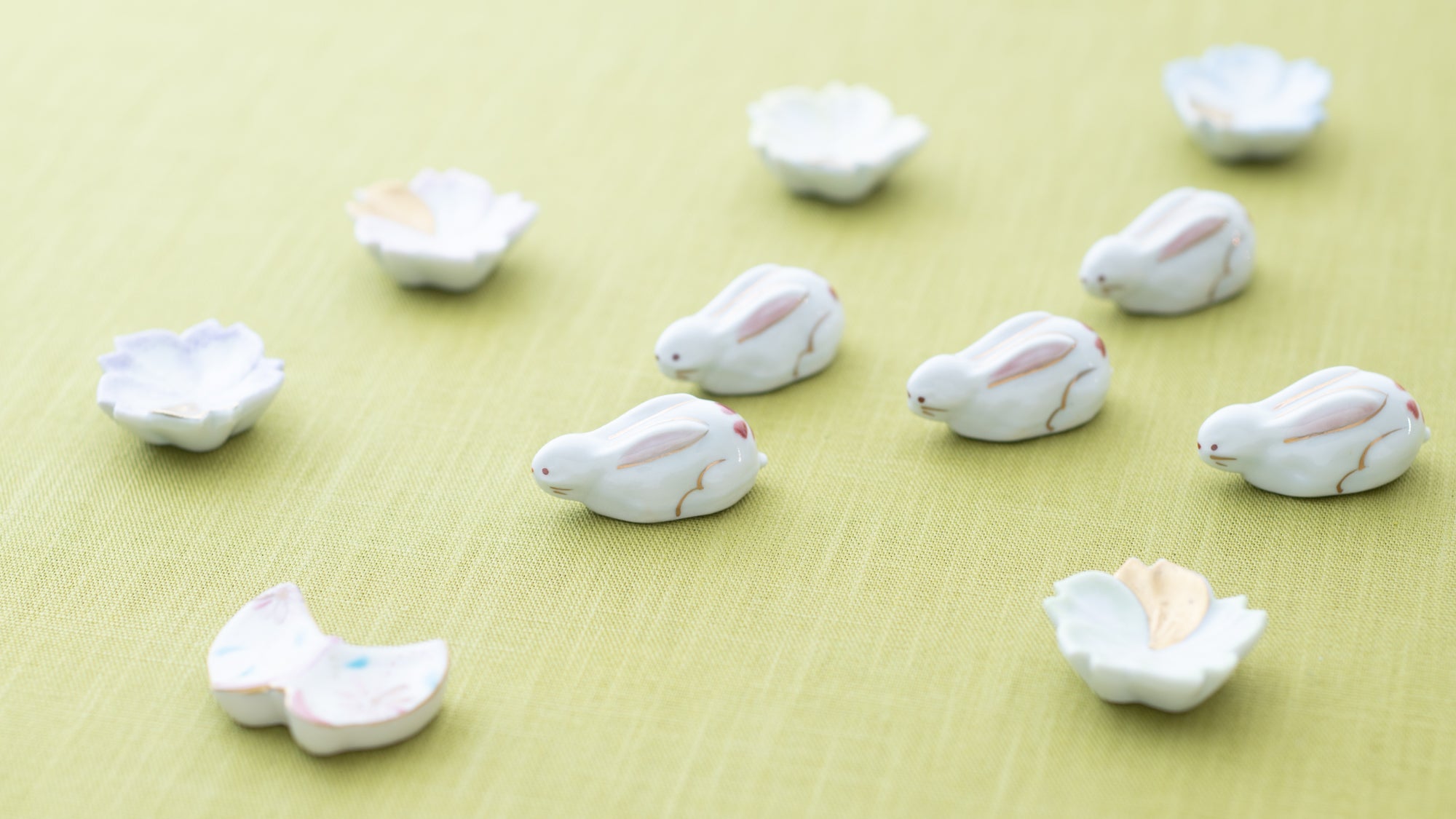
Kunsthandwerk
Kyo- und Kiyomizu-Ware, zusammen als Kyo-yaki und Kiyomizu-yaki bekannt, sind berühmte Keramikstile aus Kyoto. Bekannt für ihr lebendiges Design, ihre fein geformten Formen und die Liebe zum handwerklichen Detail, spiegeln diese Waren Kyotos unverwechselbaren Sinn für Schönheit und künstlerische Raffinesse wider.
Kyo- und Kiyomizu-Ware zeichnen sich durch eine lange gepflegte Vielfalt aus und greifen auf Techniken und Stile der Töpfertraditionen Japans zurück. So entwickelte sich eine ausdrucksstarke und typisch Kyoto-Kunstform. 1977 als traditionelles japanisches Kunsthandwerk anerkannt, werden sie bis heute wegen ihrer kulturellen Tiefe und Alltagstauglichkeit geschätzt.

Optionen auswählen














Estimated Shipping Widget will be displayed here!
Essstäbchenablagen
Essstäbchenhalter verleihen Ihrem Tisch einen Hauch japanischen Stils. Eine Mischung aus Alltagsgegenständen und besonderen Anlässen macht Ihren Tisch für jeden Anlass bereit. Wir haben handgefertigte Essstäbchenhalter aus ganz Japan ausgewählt, um Ihr kulinarisches Erlebnis noch angenehmer zu gestalten. Von verspielten Porzellanformen bis hin zu eleganten Metalldesigns verleihen diese kleinen Akzente jedem Ambiente einen besonderen Charme.
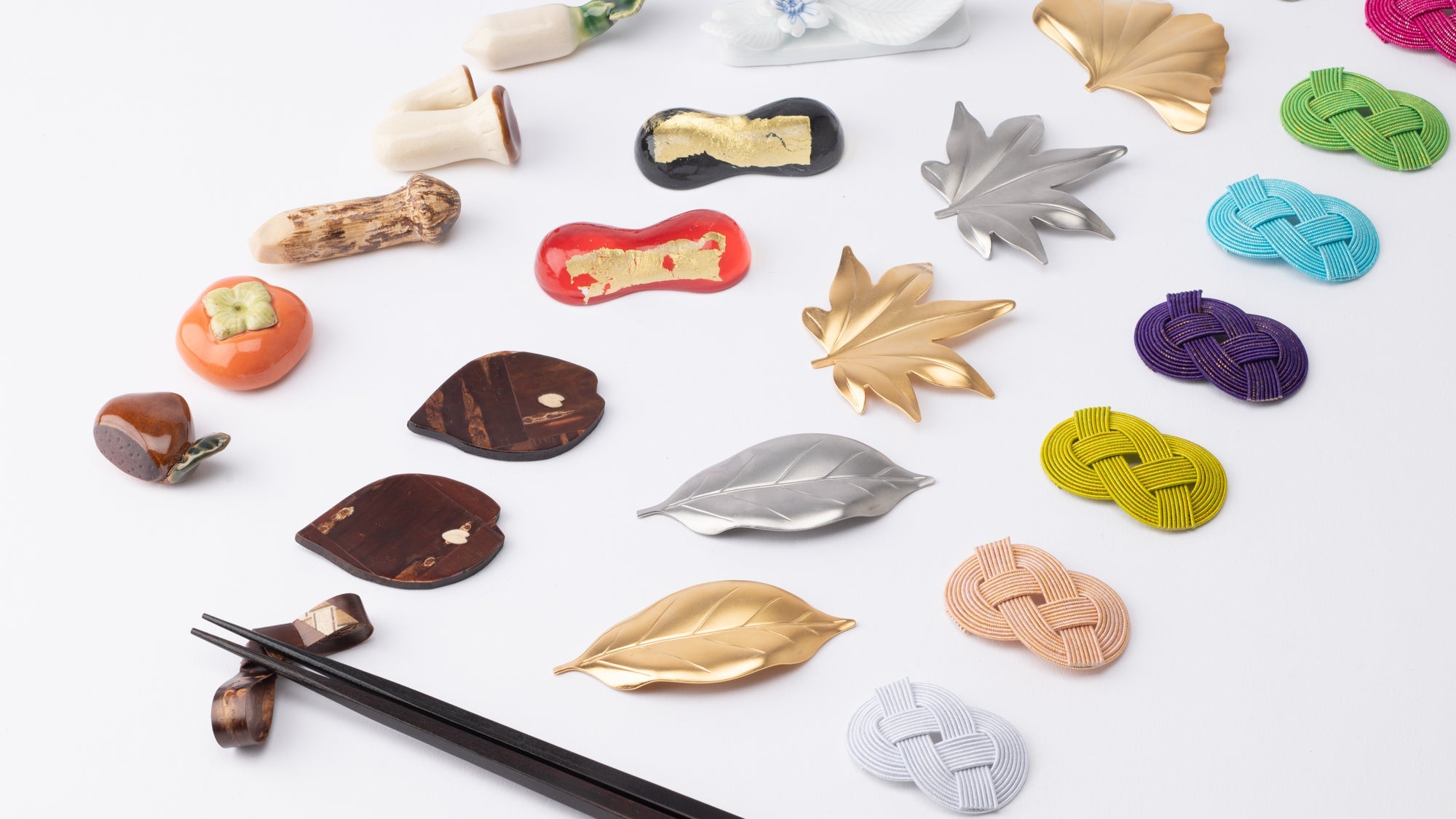
Kühlen Sie sich mit Blautönen ab
Bringen Sie diesen Sommer japanische Akzente mit Geschirr und Dekoration in Blautönen in Ihr Zuhause. Mit minimalistischen geometrischen Mustern, modernen Stilen und kunstvoll bemalten Designs verleihen die Artikel dieser Kollektion Ihrem Spätsommertisch das gewisse Extra.
Einer der klassischsten japanischen Blautöne ist Kobaltblau: eine satte, kräftige Farbe, die sich sowohl als Statement-Stück als auch als Hintergrund für Speisen oder als Leinwand für Details eignet. Kobaltblau wird oft mit reinem Weiß kontrastiert – eine zeitlose Kombination, die im Japanischen als Sometsuke bekannt ist. Ein weiterer Favorit ist Marineblau, eine elegante Farbe, die in der japanischen Kunst häufig vorkommt. Marineblau verleiht einem Tisch eine tolle Erdung. Nicht zuletzt gibt es Mizu-iro, wörtlich „Wasserblau“, ein blasses Aquamarinblau, das die erfrischende Kühle des Ozeans suggeriert.
Genießen Sie also die satte Blaupalette und tanken Sie in Ihren letzten Sommerwochen neue Energie.
